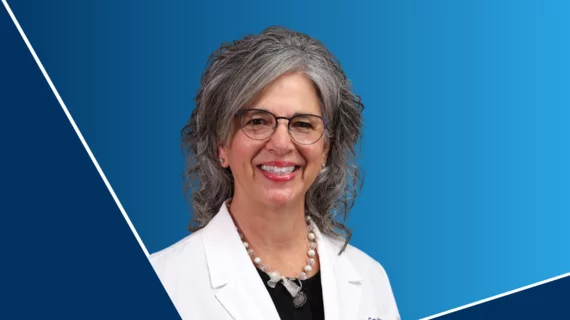Breast center thrives with remote, fellowship-trained radiologists
As the chief of surgery specializing in breast care, I’ve seen firsthand the negative impact the national physician shortage can have on women’s health—especially in underserved communities. At my community hospital, it’s hard for us to bring in a new doctor, a new nurse, anyone at all. There is just such a shortage of talent right now.
Radiologists, especially breast imaging fellows, are perhaps the single hardest position to fill in this challenging environment. If you have to rely on your own hospital’s ability to hire a new radiologist, you could be waiting for a long time—potentially putting women’s health at risk.
Fortunately, we saw the writing on the wall several years ago. We could tell, even then, that radiologists were getting harder and harder to find. We started working with vRad, the leading teleradiology provider typically associated with off-hours coverage. They also have a dedicated team of fellowship-trained breast imaging radiologists who now interpret every mammogram, ultrasound and breast MRI ordered by our breast care center. This has been a phenomenal upgrade for our hospital and our patients.
Yes, breast imaging care can be done remotely
Hospitals might be skeptical that remote breast imaging care is even possible considering the elevated interaction breast radiologists have with their patients.
vRad has solved this challenge through the use of large video phone monitors and same-day diagnostics. Patients who are called back for follow-up imaging are scheduled during “diagnostic days” when the radiologists can interpret the exam while she waits—and deliver the results to her in a personal, compassionate manner face-to-face via video phone. This technology also allows the radiologist and technologist to consult and review images in real time.
Screening mammogram reports arrive very quickly—it never takes longer than 24 hours to receive results, and it’s typically more like just a few hours.
We are a surgeon-driven breast center, which means our breast surgeons play an active role in each patient’s care. Surgeons help lead the decision-making process and do minimally invasive biopsies when necessary. Our patients like that the surgeons get involved so early and then go through the entire journey by the patient’s side. It’s a real team-first approach to patient care, with our primary care provider, surgery team, oncologists, and radiologists working together at practically every step of the process. This only works as well as it does because we work with radiologists we respect and trust.
vRad’s team also takes care of all the clinical and regulatory complexities required of a breast imaging program, including BI-RADS tracking as a crosscheck and Lead Interpreting Physician (LIP) services if needed.
Fellowship-training is paramount in breast care
The fact is, our partnership with vRad allows us to provide a level of care that our patients would not be receiving if we were relying on local resources alone.
A general radiologist is certainly capable of reading a mammogram or an ultrasound, and most of them can probably read a breast MRI, but breast imaging fellows just have so much more training and experience. It is very reassuring to know you have a subspecialist radiologist’s expertise at your fingertips; it increases your confidence that the patient will be guided to the best possible outcome.
The high quality of the radiologists we work with is evident when you read their radiology reports. There was a noticeable improvement when we partnered with the vRad team. The reports were so much cleaner and more detailed than anything I had ever seen before.
Caring for an underserved community
My husband and I were both born and raised close to where I work. We love this city, and we take great pride in being members of this community. My history here helps me understand the perspective of my patients—the decisions they may make or the attitudes they may have about seeking care.
For instance, there is a metropolitan area just a one-hour drive away, but I know that many patients here are unable or unwilling to travel that far for healthcare. Either those patients are going to be treated by us or they just aren’t going to be treated at all.
When you consider our patients’ perspective and the lack of available radiologists, it becomes clear how valuable teleradiology has been for our community. When a patient undergoes a screening mammogram, they know they’ll be able to come in for a personal consultation to review the results with one of our breast surgeons. And when they do come in, the surgeon will have already reviewed the radiologist’s report, consulted with them as needed and be ready to discuss and all necessary next steps.
The COVID-19 pandemic put a spotlight on how a lack of access to breast care services can impact a community. Patients at our hospital are back to getting their regularly scheduled mammograms now, but many of them went one or two years without a single mammogram during the pandemic. An above-average number of those patients are now presenting with advanced breast cancers—yet another reminder of the importance of annual screening when it comes to early detection.
Grateful physicians and grateful patients
Teleradiology has truly changed the lives of our patients. I wholeheartedly recommend for any hospital or health system looking to provide high-quality breast care during this challenging time. The physician shortage, of course, is not limited to smaller communities like our own. Patients in cities big and small are all struggling to receive the care they need, and teleradiology would makes a lot of sense for any of those communities.
I’m grateful we discovered teleradiology years ago—and our patients are grateful too.
Editor’s note: For additional information on vRad’s telemammography program, visit their website.

